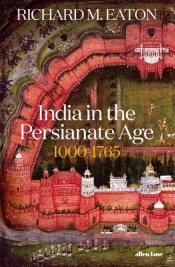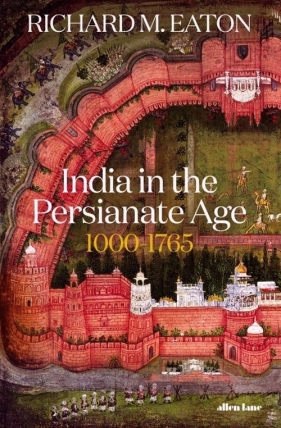122.51
Literatura obcojęzyczna
Allen Lane
India in the Persianate Age
1000-1765
Wydawnictwo:
Allen Lane
Oprawa: Twarda z obwolutą
122,51 zł
Cena rekomendowana: 135,00 zł

Cena okładkowa/rekomendowana przez wydawcę/producenta.
Produkt chwilowo niedostępny
Powiadom o dostępności
Opis
Richard M. Eaton's wonderful new book tells this extraordinary story with relish and originality. His major theme is the rise of 'Persianate' culture - a many-faceted transregional world informed and stabilized by a canon of texts that circulated through ever-widening networks across much of Asia.
The Indian subcontinent might seem a nearly complete and self-contained world. Protected by vast mountains and seas, it created its own religions, philosophies and social systems. And yet this ancient land and its varied societies experienced prolonged and intense interaction with the peoples and cultures of East and Southeast Asia, Europe, Africa, and especially, Central Asia and the Iranian plateau between the eleventh and eighteenth centuries.
Richard M. Eaton's wonderful new book tells this extraordinary story with relish and originality. His major theme is the rise of 'Persianate' culture - a many-faceted transregional world informed and stabilized by a canon of texts that circulated through ever-widening networks across much of Asia. Introduced to India in the eleventh century by dynasties based in eastern Afghanistan, this culture would become thoroughly indigenized by the time of the great Mughals in the sixteenth, seventeenth, and eighteenth centuries. This long-term process of cultural interaction and assimilation is reflected in language, literature, cuisine, attire, religion, styles of rulership and warfare, science, art, music, architecture, and more.
The book brilliantly elaborates the complex encounter between India's Sanskrit culture ('the Lotus') - an equally rich and transregional complex that continued to flourish and grow throughout this period - and Persian culture ('the Lion'), which helped shape the Delhi Sultanate, the Mughal Empire, and a host of regional states.
The Indian subcontinent might seem a nearly complete and self-contained world. Protected by vast mountains and seas, it created its own religions, philosophies and social systems. And yet this ancient land and its varied societies experienced prolonged and intense interaction with the peoples and cultures of East and Southeast Asia, Europe, Africa, and especially, Central Asia and the Iranian plateau between the eleventh and eighteenth centuries.
Richard M. Eaton's wonderful new book tells this extraordinary story with relish and originality. His major theme is the rise of 'Persianate' culture - a many-faceted transregional world informed and stabilized by a canon of texts that circulated through ever-widening networks across much of Asia. Introduced to India in the eleventh century by dynasties based in eastern Afghanistan, this culture would become thoroughly indigenized by the time of the great Mughals in the sixteenth, seventeenth, and eighteenth centuries. This long-term process of cultural interaction and assimilation is reflected in language, literature, cuisine, attire, religion, styles of rulership and warfare, science, art, music, architecture, and more.
The book brilliantly elaborates the complex encounter between India's Sanskrit culture ('the Lotus') - an equally rich and transregional complex that continued to flourish and grow throughout this period - and Persian culture ('the Lion'), which helped shape the Delhi Sultanate, the Mughal Empire, and a host of regional states.
Szczegóły
Tytuł
India in the Persianate Age
Podtytuł
1000-1765
Wydawnictwo
Allen Lane
Rok wydania
2019
Oprawa
Twarda z obwolutą
Ilość stron
490
Format
16.0x24.5cm
Języki
angielski
ISBN
9780713995824
Rodzaj
Książka
Stan
Nowy
EAN
9780713995824
Dodałeś produkt do koszyka

India in the Persianate Age
122,51 zł

Recenzje